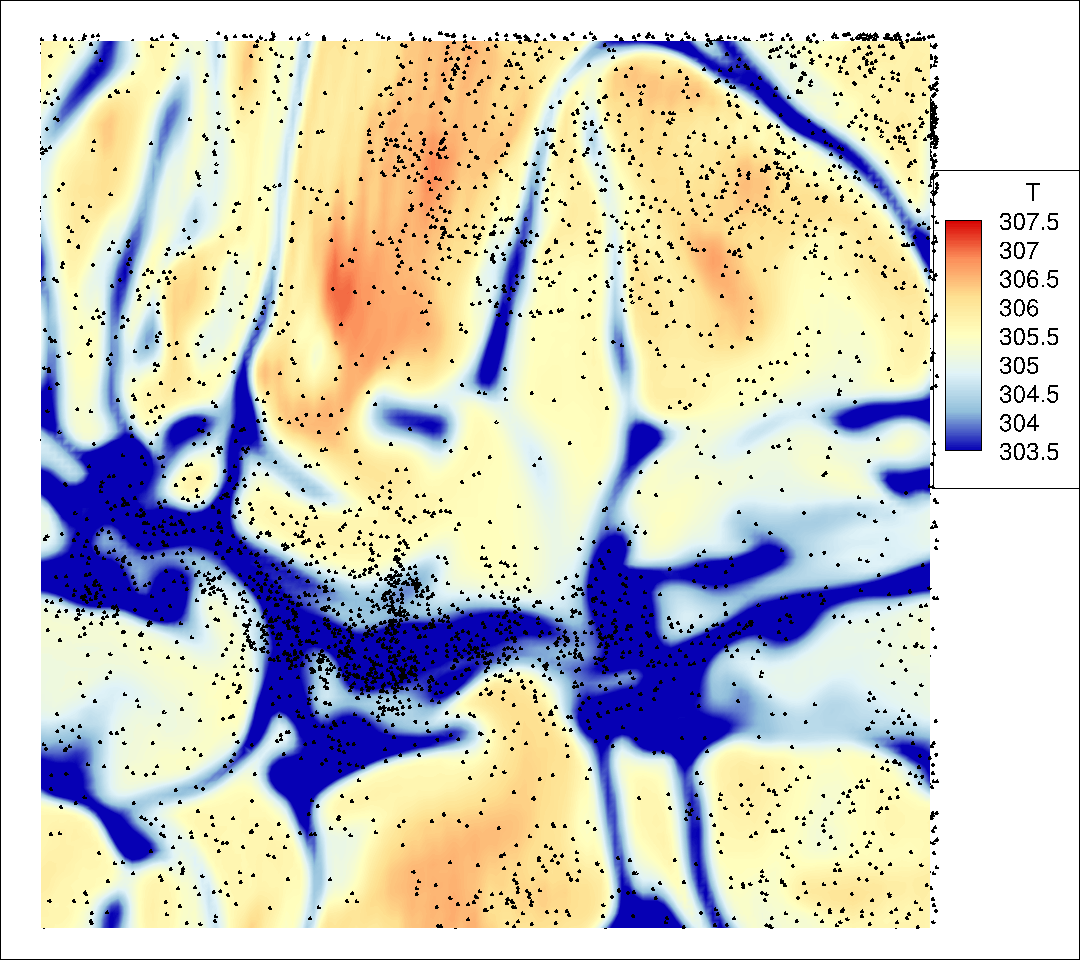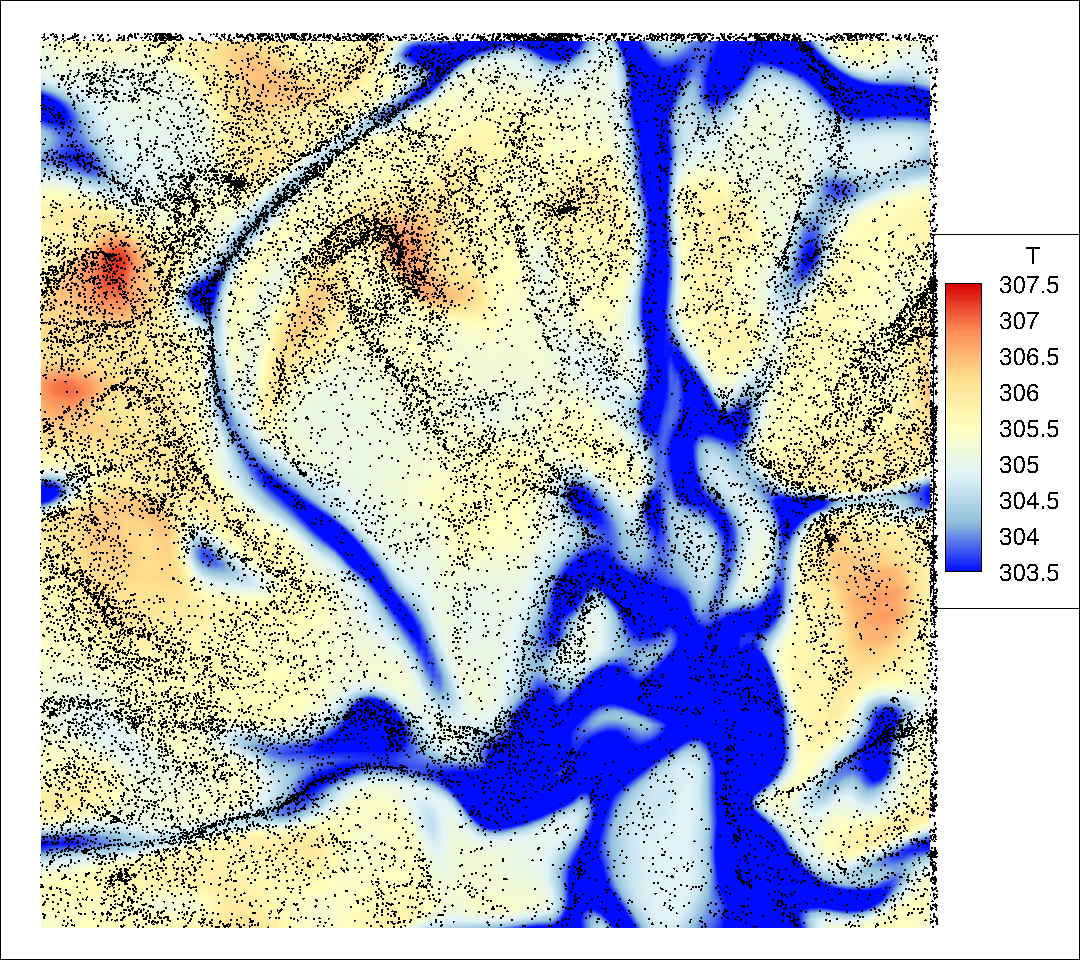

Description
Abundantly present in natural and engineered systems, small particulate matter can modify fluid turbulence due to thermal and momentum feedback. Particles of different sizes, shapes, and other variables can control the degree of interaction with the fluid. Namely, their inertial features, gravitational settling, and mass fraction are sources of feedback against fluid flow. In this study, we want to understand fluid systems that rely on the turbulence to continually suspend the particles from the bottom of the domain. An application to this study is cumulus clouds, exhibiting turbulent updrafts and downdrafts with droplets. We use an idealized Rayleigh-Benard setup to study natural buoyant flows. Studying this multiphase flow allows engineers to anticipate and optimize specific interactions. This project seeks to evaluate heat transfer and turbulence changes due to the presence of inertial particles through using Direct Numerical Simulation (DNS) combined with a Lagrangian Point-Particle method. By using these numerical simulation tools, different particle properties can be independently controlled as to determining which of these are most important in these types of systems.
- Richter, D. H., & Sullivan, P. P. (2013). Momentum transfer in a turbulent, particle-laden Couette flow. Physics of Fluids, 25, pp 053304
- Park, H., O'Keefe, K., & Richter, D.H. (2018). Rayleigh-Benard turbulence modified by two-way coupled inertial, nonisothermal particles, Physical Review Fluids, 3, pp 034307
For more information:
Project Aims
- Discover how particle properties affect the heat transfer of fluid in a Rayleigh-Benard convection flow
- Elucidate the nonlinear effects of inertia and settling velocity within particle-laden turbulent flows
- Determine the significance of momentum and thermal coupling between inertial particles and buoyant air
Project Information
Telephone: (574) 631-4839
E-mail: David.Richter.26@nd.edu